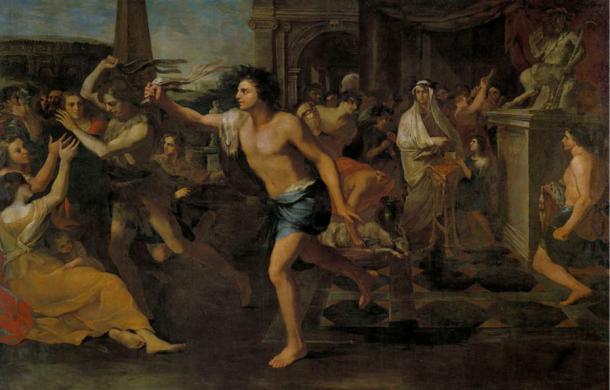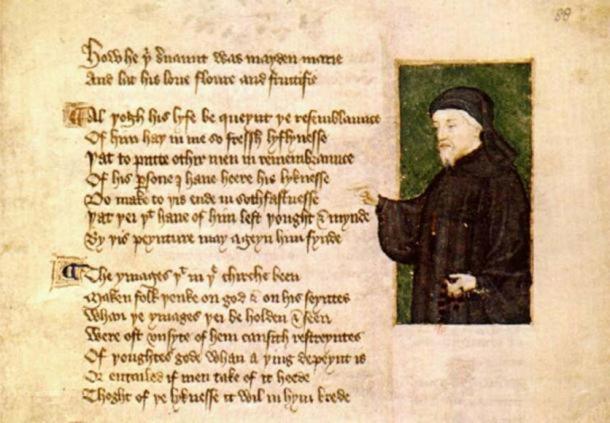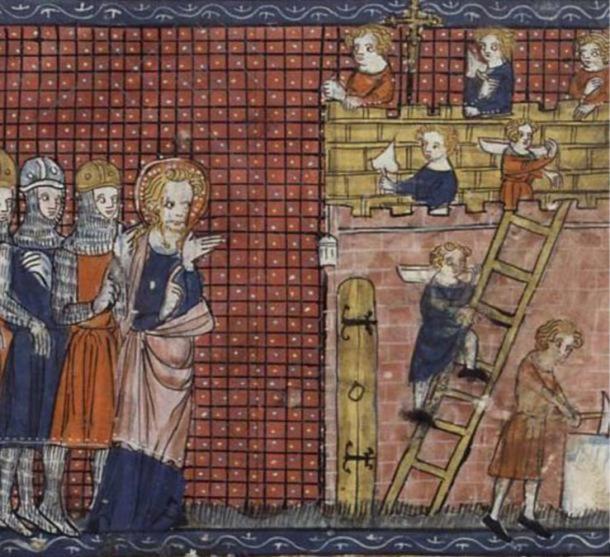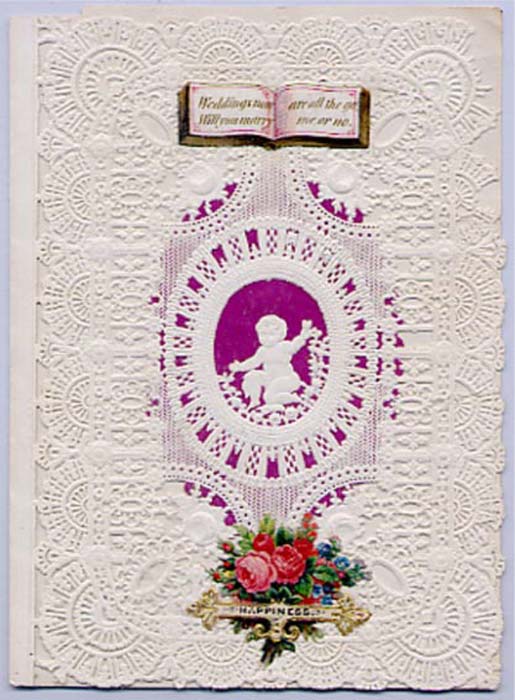Day of Love? The Complex Origins of Valentine’s Day
On February 14, couples from around the world recognize Valentine’s Day. For most, Valentine’s Day is a day of love, a day to shower your beloved with gifts and tokens of appreciation, to enjoy a nice meal with them, and to have moments of romance.
Many consider it to be a “Hallmark” greeting-card holiday, created by the retail business in order to get people to spend money on flowers, chocolates, stuffed animals, jewelry, travel, meals, and other luxuries (you can read about the history of Valentine’s Day cards here). However, Valentine’s Day is not a modern creation. Rather, it is a day with ancient roots, both cultural and religious. With many legends and tales surrounding Valentine’s Day, the supposed day of love, it can be difficult to ascertain exactly where and how Valentine’s Day originated.

Painting illustrating the festival of Lupercalia. (Public Domain)
The Uncertain Roots of Valentine’s Day
Valentine’s Day is not a global holiday. It is celebrated in many countries, but its classification as a holiday is somewhat limited. It is also referred to as St. Valentine’s Day, or the Feast of Saint Valentine, which gives the impression that the celebrations on February 14 have Christian roots. However, the day is also said to have Pagan origins.
Some say that Valentine’s Day is rooted in an ancient Roman festival. During Roman times, an annual festival known as Lupercalia occurred from February 13 - 15 of each year. During this festival, men would strip naked and swat young maidens with dog or goat-skin whips, to increase their fertility. This practice began well before Christianity was adopted within the Roman Empire, but continued after legalization of Christianity occurred.
- The ‘Real’ St. Valentine Was No Patron of Love
- Barbarians versus Romans: Violence and Urban Life in Late Antiquity

The Lupercalian Festival in Rome by Adam Elsheimer (Public Domain)
Greek historian Plutarch described Lupercalia in his works, recording:
“Lupercalia, of which many write that it was anciently celebrated by shepherds, and has also some connection with the Arcadian Lycaea. At this time many of the noble youths and of the magistrates run up and down through the city naked, for sport and laughter striking those they meet with shaggy thongs. And many women of rank also purposely get in their way, and like children at school present their hands to be struck, believing that the pregnant will thus be helped in delivery, and the barren to pregnancy.”
In “ Lives of the Principal Saints”, Alban Butler claimed that a practice during Lupercalia, in which men and women would place their names in jars and the names would be drawn to create pairings, was the start of the ritual of exchanging Valentine’s Day love notes. However, there is no evidence linking Valentine’s Day to Lupercalia, or to the practice of pulling names to pair men and women into couples.
In 1382, Geoffrey Chaucer authored “ Parlement of Foules”, within which he wrote:
For this was on seynt Volantynys day
Whan euery bryd comyth there to chese his make.
This translates to:
“For this was on St. Valentine's Day, when every bird cometh there to choose his mate.”
There has been an assumption that Chaucer was referring to February 14 as Valentine’s Day, but there are many arguments under which Chaucer could have been referring to any number of days during the year. For example, it is unlikely that birds in the area would be choosing a mate during the winter month of February.
- Some Top Tips for Valentine’s Day … from Medieval Lovers
- Ancient Spells and Charms for the Hapless in Love

Portrait of Chaucer by Thomas Hoccleve in the Regiment of Princes (1412). (Public Domain)
An Elusive St. Valentine?
Another possibility for the origin of Valentine’s Day involves Christian priest, St. Valentine. It is alleged that, at one point, Roman emperor Claudius II banned marriage to prevent young men from avoiding the draft by marrying. Valentinus, a Christian priest, agreed to perform secret marriages for those who wished to become married. However, it has been argued that no such ban on marriage ever took place, and that Claudius II, in fact, urged his men to take multiple wives.
Another story of St. Valentine claims that a priest by such name was jailed when he fell in love with the warden’s daughter. He would write her notes signed “Your Valentine,” for which he was eventually beheaded. Many Christian priests named Valentine were martyrs, and Valentine’s Day is celebrated on February 14 in many Christian denominations. In the Anglican Communion it has the rank of 'commemoration' in the calendar of saints. The calendar of saints for the Lutheran church includes the feast of St. Valentine. However, in the Roman Catholic Church, the feast of St. Valentine was removed from the Roman Catholic Calendar of Saints in 1969.

Saint Valentine of Terni and his disciples. Paris, 14th century. Public Domain
The Many Modern Styles of Valentine’s Day
Throughout modern times, Valentine’s Day has continued to evolve. As far back as 1797, mass-produced Valentine’s cards came into production, after the publication of a book called “ The Young Man's Valentine Writer”. Rather than writing individual notes to their beloved, men could take from these scripts. In the 19th century in England, paper Valentines became very popular, adorned with embellishments such as ribbon and lace.
Mass production of Valentines in the United States began in 1847 when Esther Howland, inspired by a Valentine received from Europe, began selling Valentines through her father’s stationery store. Today, stores around the world mass-produce a wide variety of Valentines cards, with images of hearts and Cupid, and containing lace and ribbon. Some of these cards are sentimental and romantic, while other are humorous. Cards are no longer meant solely for one’s beloved, as they are distributed widely among young children in school, given to friends, parents, and other family members.
There are as many ways to observe Valentine’s Day as there are cultures that recognize it. European folk tradition ties St. Valentine to the approach of spring. In Norfolk, England, a mystical character named “Jack Valentine” visits houses delivering candy and presents. In Slovenia as well, the saint is related to spring, and is the patron of beekeepers. February 14 in Finland is for remembering all your friends, rather than lovers. In Japan, China and South Korea, Valentine’s Day is observed with the traditional sweets and gifts, but one month later on White Day, March 14, the favor is expected to be returned in kind, with more presents and chocolate.

An Esther Howland paper Valentine, circa 1850: "Weddings now are all the go, Will you marry me or no"? (Public Domain)
It is difficult to say for certain where Valentine’s Day originated. Many wish to argue that it is a holiday that originates with Pagan roots, perhaps inspired by the Roman festival of Lupercalia. Others prefer to view it as a Christian holiday, started by a brave St. Valentine who went against the law and married those who were in love, or a St. Valentine who fell in love with a warden’s daughter, and who lost his life due to the love letters he wrote to her, signed “Your Valentine.” Regardless of the roots of the holiday, Valentine’s Day remains a popular day to be in love.
Top image: Book pages curled into a heart for Valentine’s Day. Source: pirotehnik / Adobe Stock
References
Valentine's Day: Pagan or Christian Holiday? Pagan Origins of Valentine's Day – About Religion. Available from: http://atheism.about.com/od/springholidays/p/ValentinesDay.htm
Valentine's Day History – Info Please. Available from: http://www.infoplease.com/spot/valentinesdayhistory.html
Valentine's Day: Why Do We Celebrate It? (Hint: Naked Romans) – National Geographic. Available from: http://news.nationalgeographic.com/news/2012/02/120213-valentines-day-gifts-cards-history-facts-naked-romans/
Lupercalia – Wikipedia. Available from: http://en.wikipedia.org/wiki/Lupercalia


















Comments
The connection between Christians and Roman worship in Valentine's Day has to be established. Though there is no evidence but from this past history much can be learnt of the origin. The quote-Valentine's Day is a reminder of the joy another person brings to your life-simply paraphrases the modern approach to this lovely day (source: http://decentquotes.com/valentines-day)